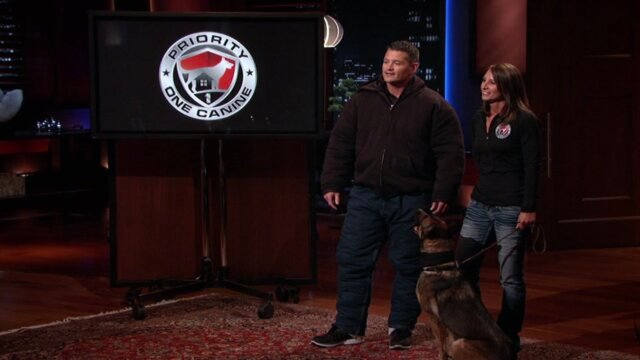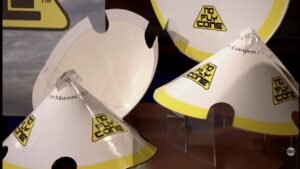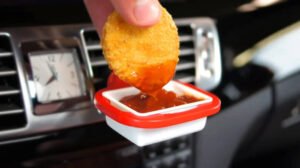Let’s get one thing straight: Not every flashy Shark Tank pitch turns into a household name. Some wow the Sharks and flop for real customers. Others get zero offers, brush off the sting, and get to work. Sunscreen Mist? That’s a case of pitching hard, hearing no, and then hustling even harder. We’re talking automated sunscreen in seconds, a public spectacle—and a business lesson worth your attention.
Contents
ToggleWhat Is Sunscreen Mist?
Picture rolling up to a pool, beach, or concert and skipping the grease and mess of regular sunscreen. Instead, you walk into a booth or grab a sprayer and—bam!—full skin protection in seconds. That’s Sunscreen Mist, pitched by founders Tony Fayne and Josh Kaplan.
These guys weren’t selling creams. They built a gadget—two, actually. One’s a big booth you step inside, like a tanning booth for sunscreen. The other’s a handheld system you can roll out wherever sunburns threaten. The goal? FDA-recommended coverage, no missed spots, and no can you get my back? moments. That’s why they showed up on Season 6 of Shark Tank. It was splashy, it was different, and the market need? Real.
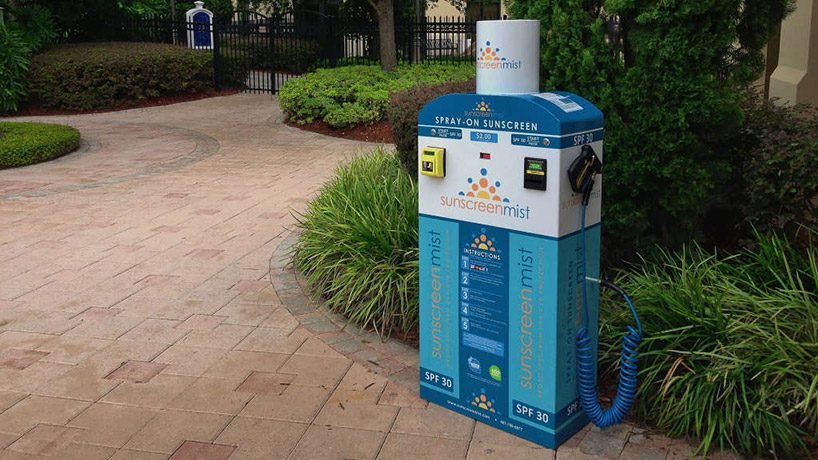
Pitching Under Pressure: Sunscreen Mist Steps Into the Tank
Let’s break down what happened in that Tank. Tony Fayne and Josh Kaplan strolled in asking for $400,000 for 15% of their company. If you’ve pitched before, you know the math: That’s a roughly $2.7 million valuation.
They brought both machines. The booth looked futuristic and promised no-fuss, full-body sunscreen mist in seconds. The smaller sprayer was targeted for flexible use. Their numbers sounded good, on paper—they’d made $300,000 in the months leading up to their pitch.
They highlighted a simple story: Most people mess up sunscreen, miss spots, and hate the sticky clean-up. Their solution? Make it fun, fast, and foolproof. Even the FDA recommends how much sunscreen we should use, but who actually measures it? With Sunscreen Mist, you don’t need to.
The crowd saw the value—no beach buddy required. But the Sharks? That’s where it got interesting.
Shark Reactions: Hits, Misses, and Straight Talk
Let’s cut through the TV drama. Tony and Josh didn’t leave with a deal, and here’s why.
First out? Barbara Corcoran. She saw complexity, not a quick win. Too many moving parts, too much hassle for hotels or spas, she said.
Robert Herjavec bailed early. Whether it was the market fit or unclear pitch, he wasn’t feeling it.
Mark Cuban didn’t pull punches. He called out the founders for dodging tough questions and exaggerating parts of their story. Mark doesn’t have time for maybe later.
Lori Greiner listened but passed. She wanted a slam-dunk proof of concept. Without enough validation from the market, she didn’t reach for her checkbook.
Kevin O’Leary, Mr. Wonderful, was almost in. The math didn’t add up for him, so he offered only opinions—not cash.
I’ve seen this pattern. A big idea that’s hard to scale on-site, expensive up front, and requires buyers (hotels, waterparks) to gamble on something customers need to see in action. The Sharks know risk, and they like quick, clean bets. This wasn’t it.
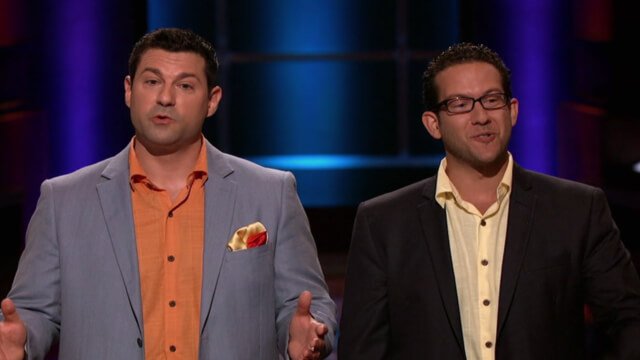
Sunscreen Mist Net Worth and Revenue: Is There Real Money Here?
Now we’re talking. SharkTank fans get hung up on Did they get a deal? I care about results.
Sunscreen Mist had hauled in around $300,000 right before their pitch. Not chump change, but not demo-day-hot either. Fast forward, and the story gets spicier: After the show, Sunscreen Mist revamped, stuck to their grind, and—according to SharkWorth—they’re now pulling in about $1-2 million a year. That’s real.
Is that unicorn territory? No. Is it a graveyard for ex-Shark Tank hopefuls? Not even close. For a big, clunky, B2B product (hotels, pools, waterparks), seven figures is serious growth.
Margins? Decent, but not Scrub Daddy or Bombas. Their booth sells for about $31,000, handheld units for $17,000 (retail), with a wholesale price cut. Not your average Amazon FBA side hustle. They’re selling equipment plus the recurring sales of solution (sunscreen, aloe, bug spray). That “razor and blades” model is a classic for a reason.
Product Line: What’s in the Booth and What’s in the Box?
So what do you actually get?
- Full-body booth: Looks like a tanning booth. Step inside, close the door, hit a button, and you’re misted from head-to-toe.
- Handheld pro sprayer: Smaller, portable, and more flexible for venues not ready for full-size installs.
The software and nozzles claim to hit every inch of skin evenly, using up the exact dose the FDA recommends. Smart, if it works as advertised.
And here’s the twist: Sunscreen is just the start. These booths now dispense cooling aloe spray, tan accelerator, and even bug spray. That’s a big move. You own the machine, then upsell with new blades for every need.
The target? Hotels, water parks, resorts—anywhere with UV, crowds, and a need for a wow factor. Vegas’ MGM Grand was one of their first headline placements, though that didn’t stick. Still, they kept adding new whales to their list.
Global Reach: Where Are These Things Actually Being Used?
Ready for this? As of 2021, Sunscreen Mist had machines on every continent except Antarctica (and let’s be honest, nobody’s sunburning out there).
North America holds the most, with 18 machines. Then you’ve got outposts in Europe (Rome, Spain, Germany, Norway), Africa, the Middle East, Asia, Australia, and even South America. Is this full, Bombas-level market saturation? Nope. It’s slow, strategic, and capital-heavy growth—classic for anything this physical.
Recently, they also rolled out mobile booths for festivals and outdoor events. That’s smart pivoting. It takes a clunky product and adds flexibility. Sometimes you don’t need beachfront property to move units—you just need a captive, sunburn-prone crowd for a weekend.
Life After the Tank: Did Sunscreen Mist Sizzle or Fade?
This is where the real storyline separates hype from substance.
No deal on Shark Tank usually means fade to black. But Sunscreen Mist proved different. Tony and Josh doubled down. They took feedback, tweaked the tech, and hit up new verticals—music festivals, global hotels, high-traffic beaches.
You don’t go from $300K to $2 million in a dead niche. These guys leaned into more than just sunscreen. Aloe, bug spray—think outdoor wellness vending machine. It’s not a moonshot, but it’s sustainable and scalable at its pace.
Are they the next billion-dollar Juggernaut? Not likely. But they are outlasting a ton of flash-in-the-pan TV products. They got scrappy and played the long game—a move a lot of founders ignore once the spotlight dims.
What’s Next for Sunscreen Mist?
Here’s my take: Sunscreen Mist sits at an interesting crossroads.
What’s their ceiling? The market isn’t endless. You can’t sell these booths to every corner store. Scale means more events, new partnerships, and repeat customers at high-traffic venues. Their smartest move so far—adding new sprays—will keep them relevant.
If I was advising them, I’d say go aggressive on events and licensing. Own outdoor festivals. Partner with public health orgs. Maybe even design a home-friendly version that doesn’t cost as much as used car.
Innovation is key, but the next phase needs speed and simplicity. If they stick the landing, they could become a staple wherever skin needs saving in seconds.
Final Word: The Real Lessons from Sunscreen Mist’s Journey
Here’s where the Shark Tank sparkle fades, and the real game—the one you and I know—begins.
First, a deal isn’t everything. Many founders walk off that set thinking it’s over when the Sharks say no. Tony and Josh? They went back to work. Real talk: If your only plan is get a deal, you’re probably not gritty enough to build past the hype.
Second, your product has to solve a pain. Sunscreen Mist identified a universal pain—sunburns and messy application—but scaled it in a way that demanded persistence and ingenuity.
Third, pivots pay off. Sticking to sunscreen alone would have boxed them in. By adding bug spray, aloe, tan accelerator, they turned a seasonal buy into a wellness platform with more shelf life.
Last, keep it simple. Don’t sell what you can’t explain fast to buyers with a real budget. Sunscreen Mist was complex at first—they got simpler and grew.
So… did Sunscreen Mist flop? Hardly. They didn’t win the Sharks’ money, but they’re stacking wins off camera. Founder grit, strategic pivots, and just enough showmanship—this is the playbook for hustlers who are in it for the long haul.
Want the raw numbers and ongoing updates? SharkWorth is a solid spot for tracking the real net worth and growth of Shark Tank alums.
FAQs
1. Is Sunscreen Mist from Shark Tank still in business?
Yes—Tony Fayne and Josh Kaplan are still running Sunscreen Mist, and business is steady with global reach.
2. Did any Shark invest in Sunscreen Mist?
Nope. All five Sharks—Mark Cuban, Barbara Corcoran, Lori Greiner, Kevin O’Leary, and Robert Herjavec—passed on the deal.
3. How much is Sunscreen Mist worth today?
Current estimates peg Sunscreen Mist’s annual revenue at $1-2 million. For net worth breakdowns, check SharkWorth.
4. Where are Sunscreen Mist booths located now?
You’ll find them across North America, Europe, Africa, Asia, Australia, and more—mostly at hotels, pools, and big outdoor events.
5. What products does Sunscreen Mist offer besides sunscreen?
They’ve expanded into cooling aloe mist, tan accelerator, and bug spray—each dispensed from the same machines.
6. Can you buy Sunscreen Mist for personal use?
Machines are meant for businesses—hotels, waterparks, events—not individual homeowners (yet).
7. Did the founders keep running the company after Shark Tank?
Absolutely. Tony and Josh are still steering the ship and steering new deals outside the Tank.
8. How do Sunscreen Mist machines work and are they safe?
Step in (or use the handheld), push a button, and you’re evenly misted in seconds. The formula is FDA-approved and safe when used as directed.
Every Shark Tank pitch tells a story, but what happens afterward is what matters. Sunscreen Mist didn’t land a deal, but they turned a TV no into steady money and slow, scrappy growth. That’s what hustle looks like in the wild.




